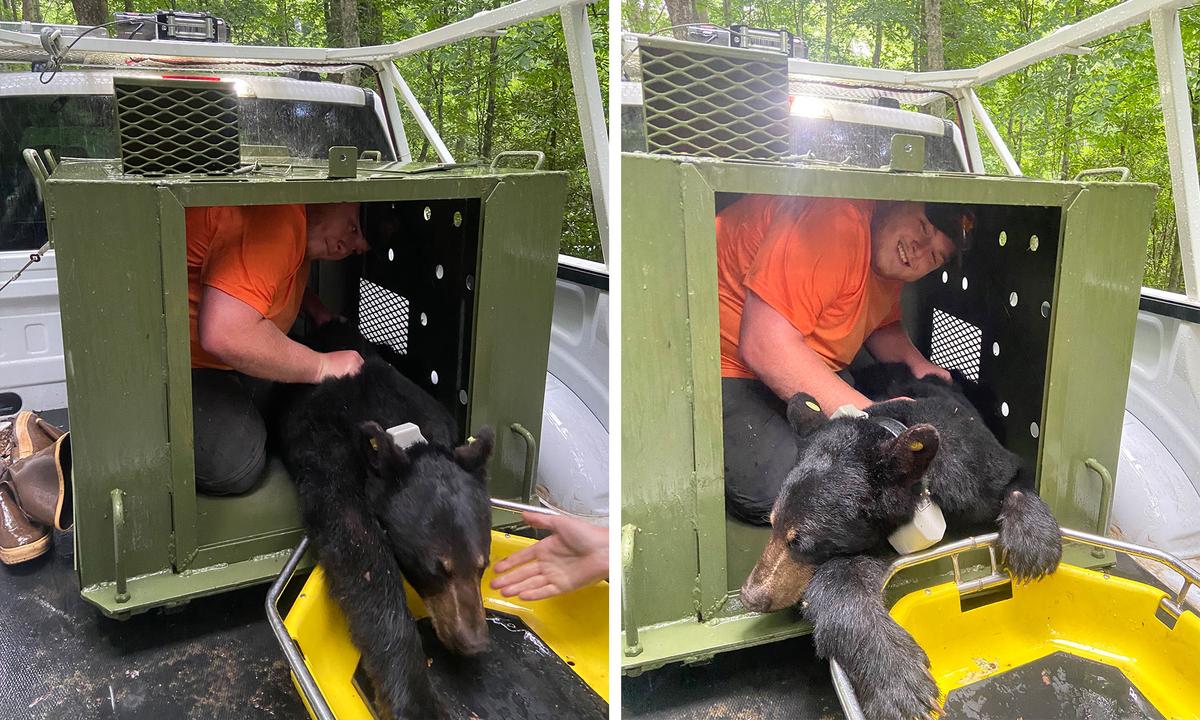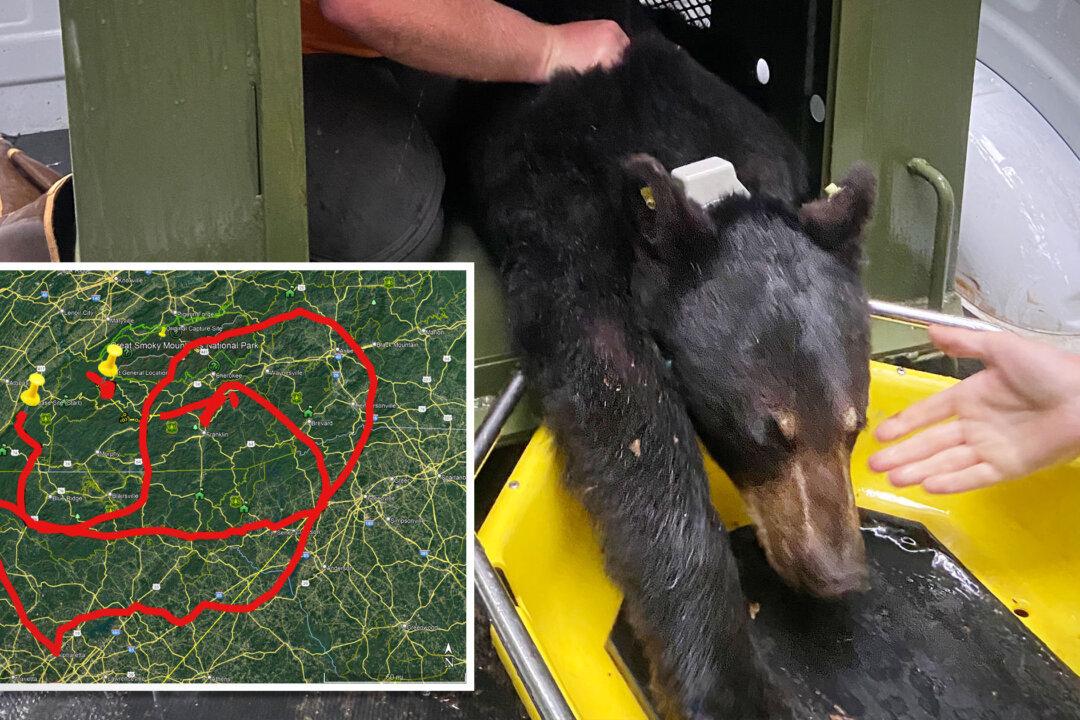After a run-in with park visitors, a female black bear in Tennessee was relocated to a place where she would, hopefully, cause less trouble. But, the bear then trekked over 1,000 miles to return to her favorite park once again. The tenacious female even crossed four states during her 6-month journey. Park workers were astonished to observe her GPS data—she had been fitted with a tracking collar—providing scientists new insight into black bear behavior. After raiding trash cans, scavenging from picnic tables, and stealing hikers’ bags, the 5-year-old bear, known by her number, 609, was relocated 150 miles from her home at Great Smoky Mountains National Park (GSMNP) to South Cherokee National Forest (SCNF) in Polk County. But she didn’t stay put for long. “She never stopped, she never slowed down,” supervisory wildlife biologist Bill Stiver, 58, a 32-year employee of GSMNP, told The Epoch Times. “If you look at the track of this bear, she crossed some major interstates, major roads. In fact she was hit by a car, but it didn’t kill her.”






